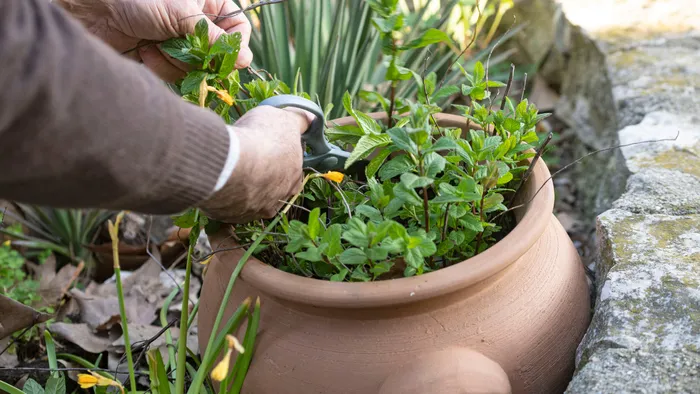
How to harvest and dry mint leaves
One of the most rewarding parts of growing mint is getting to enjoy its unique and delicious flavour, and with a little guidance, you can harvest the leaves without damaging your plant. This guide will walk you through the essential steps for harvesting and drying mint leaves, allowing you to preserve their freshness and bold taste.
Make sure to read to the end of the blog to discover some of the best ways you can use your dried mint leaves!
When to harvest mint
The timing of your mint harvest is crucial to getting the best quality leaves. Mint is a hardy herb, but you should allow it to grow to a healthy size before trimming it back. Typically, mint should be about 15-20 cm tall before you start cutting. This allows the plant to establish a strong root system and have enough leaves to spare.
The best time to harvest mint is early in the morning, before the sun reaches its peak. During this time, the oils in the leaves, which give mint its distinctive aroma and flavour, are at their most concentrated. Harvesting early also prevents the leaves from wilting too quickly in the heat of the day. By catching them at their freshest, you’re ensuring the highest quality yield.
How to harvest mint leaves
The key to a successful mint harvest is using the right tools and technique. You’ll need sharp, clean scissors or garden shears to avoid damaging the plant. Gently snip the stems just above a set of leaves. This will encourage the mint plant to grow more. Avoid cutting more than one-third of the plant at once, as removing too much can stress the plant and stunt its growth. For the best results, focus on harvesting the more mature stems and leaves, leaving the younger, tender growth to continue thriving.
Trim your mint regularly
To keep your mint plant healthy during the growing season, which is from late spring to mid-autumn, you must regularly trim it. Doing so not only gives you fresh mint to use, but it also encourages the plant to produce more stems. When mint is harvested frequently, it remains bushy and compact, rather than becoming leggy, overgrown, or untidy.
It’s also a good idea to remove any flowers that start to bud. By removing the flowers early, you encourage the plant to focus its energy on leaf production, giving you more mint to harvest later. That being said, if you want to fill your garden with beautiful flowers, then you can let them grow and remove them as they start to fade, or you can even use them to decorate your drinks and desserts!
How to dry mint leaves
Drying your herbs is the best way to preserve your harvest. Here are two methods you can use to dry your mint and keep it safely stored throughout the year:
Method 1 (air drying):
-
Rinse the leaves: Gently rinse your mint leaves to remove any dirt or insects, then pat them dry with a paper towel.
-
Air dry: Bundle the mint sprigs together by tying them with string or a rubber band, and hang them upside down in a cool, dry place with good air circulation. A kitchen or pantry with plenty of airflow is ideal. Be sure the area is out of direct sunlight to preserve the mint’s vibrant green colour and essential oils. Depending on the humidity and temperature, mint may take anywhere from 1-3 weeks to fully dry.
-
Storage: Once the leaves are fully dried and crumble easily when touched, they’re ready for storage. Store dried mint leaves in airtight containers or glass jars in a cool, dark place. For the best flavour, use dried mint within a year, but it can last much longer.
Method 2 (using an oven):
-
Remove leaves from stems: Strip the leaves off the stems and separate the best leaves for drying. The fastest and easiest way to do this is to place the stem through a hole in a colander and pull so that the leaves detach and pile up, then give them a wash and let the water drain away.
-
Use an oven: If you don’t have the time to air dry your mint, you can use a low-temperature oven (around 38°C/100°F). Spread the leaves in a single layer, avoiding overcrowding, and allow them to dry for several hours, checking on them regularly to avoid burning.
Best ways to use your dried mint
Whether you’re brewing a cup of mint tea, adding a refreshing twist to your recipes, or crafting homemade remedies, having a stash of dried mint leaves will ensure you always have this versatile herb on hand.
If you’re looking for some fresh inspiration then go to our recipe section for minty treats and more!